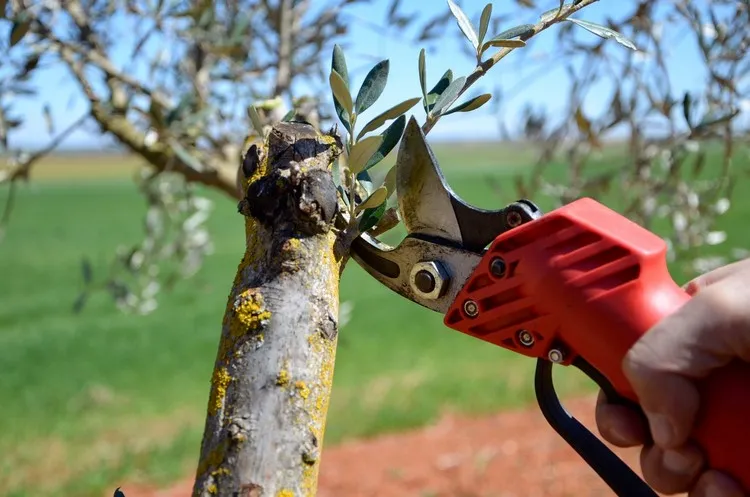As mentioned above, pruning the olive tree is an extremely advantageous and important step in the maintenance of this medium-sized tree. When done correctly, pruning the olive tree will boost the production of olives from one year to the next while improving the quality of the fruiting. In order for the olive tree to benefit from all its virtues, pruning must be done correctly and at the right time. Find out when to prune your olive tree in the following paragraph.
Contents
When to prune an olive tree?
The pruning of the olive tree, as for all fruit trees, is done at three different times and depends on the objective. Thus, there is a training pruning to be done when the tree is planted. Then, there is the maintenance pruning done annually in February. Finally, there is the fruiting pruning to be done every 2-3 years.
Before proceeding with the proper pruning of your olive tree, it is important to get the necessary tools, including pruning shears, a pruning saw and a healing product to be applied to cuts larger than three centimeters in diameter.
How to prune an olive tree?

And now let’s see how to prune an olive tree in order to enjoy a good and abundant fruiting during the years. As the pruning is done at three different times (see above), we will examine them one by one, explaining the operations to be performed for each of them.
Training pruning
Logically, we start with the pruning that is practiced when the tree is planted, but provided that the tree is large enough, about a meter and at least four years old. Then, choose 4-5 of the largest branches to keep, arranged around the trunk of the tree and cut the others. Finally, pinch off the central branch.
Maintenance cut
Practiced every year in February, the maintenance cut consists in cutting first the shoots having grown at the foot of the olive tree. Then, it is the turn of the branches coming from the trunk. Finally, it only remains to cut the branches growing towards the inside.
Pruning for fruiting
The pruning for fruiting is the most important and it is done every two years during the period after the cold season and the month of May. Here, the objective is to create a structure with 4-5 branches in order to boost light and air circulation, which in turn favors pollination and fruiting. In addition, the risk of disease development is reduced. So, how do we do it? First of all, we prune the branches of the previous year that have already produced olives before pruning the arching branches. Then, we cut the new branches that develop from the trunk, as well as the dead wood. Finally, the most vigorous branches are pruned back by a third, because the olives are best when they grow close to the trunk.
Where to grow olive trees ?
Territories by the sea are not recommended, as the harvest would be reduced. The trees are planted in winter, but it is important to avoid periods of frost. The olive tree likes all soils, even the poorest, but it does not support humidity.
Main pests
You have pruned your olive trees correctly and you hope to have healthy and delicious fruits? To get the most out of them, it is essential to recognize the main diseases of the olive tree in order to act as quickly as possible and avoid major damage. The olive fly is one of the two main pests that you must learn to identify urgently. It lays eggs from July onwards to cover the fruit with white maggots that feed on the pulp, causing the olives to rot. The control of the larvae is quite difficult and is done via pheromone traps.
The second insect that likes to ravage olive trees is the black scale insect that invades the leaves as well as the branches, but can also cover the tree with a black felting. Black scale insects have small oval hulls with raised patterns that resemble the letter H. To control them, experts recommend spraying with white oil in March.

